Frame Drum Comparison
I get many emails asking about which frame drum for which situation and what is a good instrument to start with, here are some of my thoughts on the subject. All this is of course subjective and reflects my personal taste.
My choice of frame drums are David Roman Drums and Cooperman Drums. In this article I will refer to the drums I play but there are other good alternatives such as Schlagwerk, Remo, Meinl, Anklang and many more. Generally there isn’t one perfect frame drum for all situations and playing styles. If you’re starting, I’d recommend to get a drum that you feel most comfortable with in the style you play most (lapstyle, upright, freehand, etc.). Later when you start playing in other styles, you can add other drums. If you’re looking for a drum that is suitable for several styles, you probably will have to compromise in some aspects.
One of the first questions that usually comes up is the decision between natural and plastic skin. Both have their pros and cons, I’ll try to summarize. Almost all my natural skin drums are made by David Roman Drums and have an air-tuning system which makes it possible to re-tune very quickly.
Natural Skin Drums:
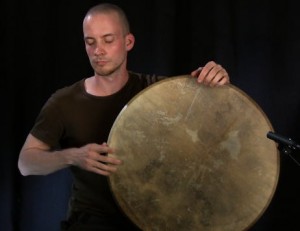
Advantages of natural skin:
-the sound
although there are a couple of plastic skins that come pretty close to the natural skin sound, I still didn’t find any that has the natural balance and especially the punch in the bass that good natural skins have.
-the feel
natural skin has a different surface structure and simply feels different.
-pitch flexibility (David Roman Drums)
with the DRD tuning system, you can retune drastically to different pitches very quickly. That means you can accompany a song in D, retune and play the next song in C. This takes some practice and exact tuning is not always easy.
Plastic Skin Drums:
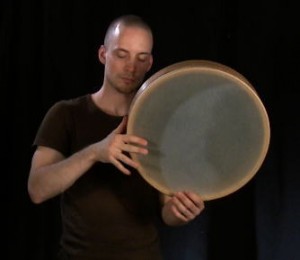
Advantages of plastic skin
-not affected by climate and changes in temperature and humidity
no matter if you play an open air gig and it starts to rain or if the spots on stage are switched on, the tuning of plastic skin drums is very stable. You can tune your drums before a concert and they will still be in tune when you start playing. As soon as you start performing this becomes a big issue. When I play a setup with tuned framedrums I almost exclusively use plastic skin drums. Also in studio situations the drum will keep the tuning for different takes. Recording in several takes with natural skin drums can be tricky because the pitch usually changes slightly.
-the sound
different kinds of plastic skins have their own sound aesthetics. This might be exactly what you’re looking for.
more on skin choice:
Most of my natural skin drums have thin calf or goat skin heads. These are very responsive for fingerstyle playing. When accompanying instrumental music I sometimes use slightly thicker skins than for solo drums. For playing solo I like a sharp sound, when accompanying it’s nice to have a less “aggressive”, more mellow sound. Deer skin is thicker and has a different sound characteristic. I don’t use it too much but some frame drummers use it with beautiful results, such as my collegue and good friend River Guerguerian (http://www.sharethedrum.com).
There are different kinds of plastic heads, the ones I use are Renaissance, Weatherking and Fiberskin. All these are made by remo but also used on the Cooperman drums. Renaissance are half-transparent and have a golden/brownish color, Weatherking are totally transparent and Fiberskin heads are white with a surface structure that imitates natural skin.
For most situations in fingerstyle playing I like the rennaissance heads. These are very responsive, sharp and have a lot of overtones. Weatherking skin sounds a bit duller and for my taste overall a bit artificial, but on small/medium size bendirs these work great. Fiberskin heads consist of 2 layers of different materials, are thicker and have less overtones than renaissance which is sometimes nice in accompanying situations.
the three basic playing positions (upright/lapstyle/freehand):
upright: the drum is held/balanced with the hands in front of your body. You can stand, walk and move around while you play in this position.
lapstyle: the player is sitting down, the drum rests on the left leg (for right handed players). The non-leading hand rests on top of the frame.
freehand: the player is sitting down, the drum is held between the legs/knees and both hands are free to play
the more you touch or hold a drum, the more you affect the vibration of the frame which takes away from the sound. In the upright position this is not a big deal. You start to feel it in lapstyle playing and in the freehand position with the drum between your knees, the effect is even much stronger. For this reason and because they give more stability I like drums with heavy deep frames for lapstyle and freehand playing.
Upright playing:
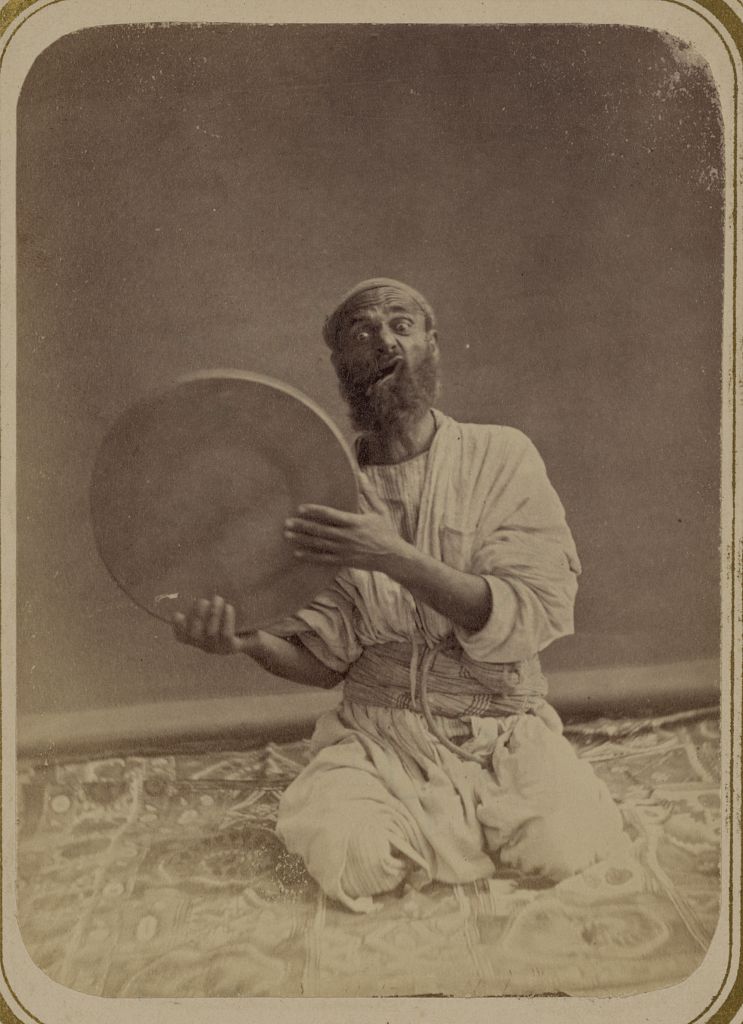
drums up to 17″ and larger are comfortable to play for experienced players in this position. My favourites are the DRD 14″ Mazhar and Tar and the 22″ Airweight, the Cooperman 14″ Ghaval without rings and the cooperman 16″ Tar/Bendir. For beginners I recommend to start with a 14″ drum, it is lighter and easier to balance. Drums with deep frame usually have a thumbhole or cutout. Which one you prefer is a matter of taste.
example (David Kuckhermann):
Lapstyle playing:

my favourites in this position are 22″ drums with deep heavy frame such as the DRD Mazhar or Cooperman Bendir. When you start to play in this position a 22″ drum might be too large and practicing it can create tension in your shoulders. A good drum to start with can be a 18″ – 20″ drum. Some drums worth looking into are the Cooperman 18″ Bendir or 20″ Bodhran, and the DRD 19″ Mazhar. If you are particularly tall or short, try a larger or smaller size. Some players prefer the more compact sound and/or size of smaller drums. Glen Velez for example mostly plays 20″ Bodhrans.
example (N.Scott Robinson frame drum solo during a concert with K.S.Resmi):
Freehand playing:
15″ to 17″ are comfortable sizes for this playing position, but everything is possible. Make sure you have a deep frame, otherwise it is tricky to hold the drum stable between your legs. If you have a heavy frame, the sound will be less affected and generally have more punch. Some drums worth checking out to start with are the Cooperman 16″ Tar/Bendir and the DRD 17″ Mazhar.
example (Vladiswar Nadishana for the Frame Drum video Podcast): ![]()
one drum for everything:
as said before, I don’t think this works too well, especially when you start you should have a drum that is really comfortable in the style you’re practicing. If you’re still looking for a drum that works in all positions, a 16″ or 17″ drum might do the job. Check out the Cooperman 16″ Tar/Bendir or a DRD 17″ light Mazhar or Tar.
Many of these drums can be ordered online in the shop section of this website.


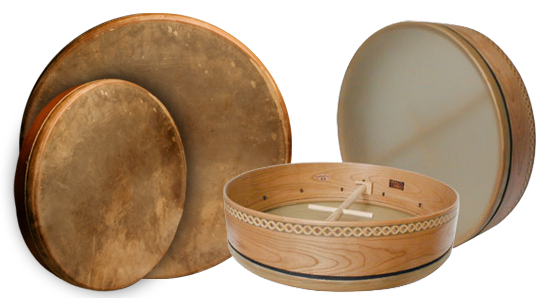

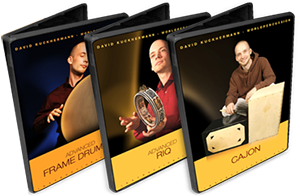
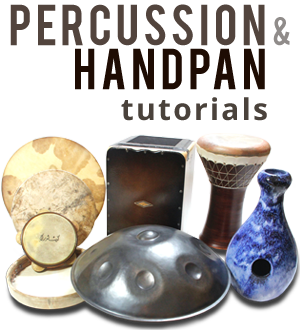
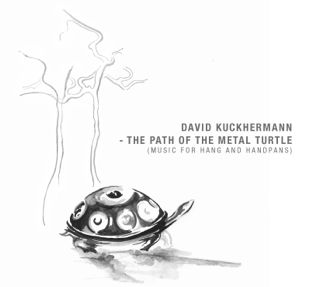
One Comment